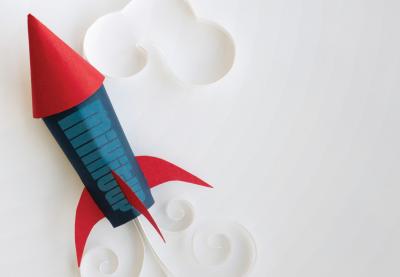Last fall, the opening notes of the song Jai Ho—“be victorious”—from the film Slumdog Millionaire erupted at Oklahoma’s Broken Arrow High School as students crossed the grassy quad between classes. In less than a minute, some 200 students of every class, size, race, sport and club had joined the ranks and were rocking the choreography. Schoolmates and teachers gathered to watch—laughing, whooping and joining local media in recording the surprise performance on their cell phones.
Within two minutes, the “flash mob” had dispersed. But its purpose still echoed off the walls: Get ready for Mix It Up at Lunch Day!
Thousands of schools have tried the Mix It Up at Lunch Day program since it started 10 years ago in 2001. Teaching Tolerance continues to get glowing reviews from around the country. “It’s the best day all year,” we were told by high school students in Plainview, N.Y. But teachers and administrators are also understandably eager to make their Mix Day better—to reach more students. How can you take your school’s Mix It Up at Lunch Day to the next level? Here are 10 proven ways to give Mix an extra stir.

Inspire Student Buy-In
Students, especially in middle schools and high schools, are encouraged to take leadership roles for planning and implementing Mix It Up programs. With clear adult guidance, they choose the music and prizes, plan the dances and other get-out-of-the-chair activities. They also devise ice-breaker questions and skits. As much as possible, students coordinate with staff, administration and outside groups like media outlets—a useful Mix It Up activity in itself. Established student groups like student councils or diversity clubs usually take the lead, smoothing the planning process. But they also invite student leaders from various cliques or groups at school who can extend the reach of Mix. Student Mix It Up leaders are rewarded with movie passes and other prizes, and they receive schoolwide recognition.
Inspire Teacher and Staff Involvement
Mix It Up programs offer natural opportunities for teachers to connect with colleagues. “Mix It Up is not only rewarding to the students, but to the staff as well,” says Shondra Jackson from Austin Middle School in Galveston, Texas. “There is something incredibly refreshing about seeing 100 kids dancing together to the Cupid Shuffle and the Cha Cha Slide. Also, to witness … our beloved cafeteria worker Ms. Tammy dancing with our students in the circle, to me is what mixing it up is all about.” Effective organizers might invite several colleagues from different grades, departments and school services to lunch—say two teachers, an administrator and someone from the cafeteria. Then they can explain Mix It Up and ask their colleagues to join them. As the Mix day approaches, organizers send staffwide email blasts to remind colleagues about the program’s value and to present substantive ways people can offer input, join in and otherwise support the program. For students, few actions better reinforce the Mix It Up message than seeing teachers and staff enthusiastically working together.
Reach Beyond the Walls
Some of the most effective Mix It Up programs establish links beyond the school building. Many Mix It Up Model Schools invite school board members, district administrators, PTA members and news organizations to take part. Most local media outlets are thrilled to promote positive stories about young people. Involvement from the wider community also sends the message to students that mixing it up matters.
Build the Buzz

Like any good ad campaign, the lead-up to Mix It Up programs builds buzz as the event approaches. Many Mix It Up at Lunch events emphasize a unifying theme. School-wide interest grows thanks to an accelerating calendar of fast promotions that use several different media. These can include morning announcements, flash mobs poster parties, bulletin boards, inschool TV spots, in-class plugs, lunchroom flyers, school website announcements, parent newsletters, Facebook posts, Tweets and other social media.
Prep Students and Teachers
Effective Mix It Up programs let students and teachers know what to expect and then prepare them for it. In-class lessons, activities or theme-related videos during the lead-up can help allay student anxieties about hanging out with classmates from beyond their regular circle. Short skits as part of morning announcements or during assemblies can explain the purpose of Mix and model positive interactions, perhaps by previewing the quirky questions of a Mix It Up ice-breaker. Also, find a creative way to group students during Mix It Up. Some schools group students by birth month or the first letters in their names. You can make it even more random by handing out playing cards or Starburst candies and having students sit by those who share the same color. Keep it fun—get them hooked on the event.
Make It A Big Deal
Experienced Mix It Up schools present Mix It Up at Lunch Day as a major change of pace from the same-old, sameold. They may rearrange tables, transform the cafeteria with decorations, pipe in music and get a conga line going, invite a speaker with a gift for talking to young people or have a school film crew capture the activities for an in-school documentary. An inspired event that leaves people grinning will have students and teachers asking for more.
Ensure Everyone is In
Effective Mix organizers keep an eye out for kids who are on the fringes— wanting to participate but unable to get in the flow. Student and staff leaders are prepped for this eventuality and are ready to step in and facilitate everyone’s involvement. Some schools put a student or adult facilitator at each table to keep the conversation moving.
Repeat
Some schools reprise their Mix It Up at Lunch two or three times a year. In fact, some do it as often as once a week. The more frequently the program is practiced, the easier it becomes to plan and execute.

Follow Up and Change It Up
Schools that have had the most success with Mix It Up follow up with other events that reinforce the Mix message. Wheeler Elementary School in Tucson, Ariz., has a “Buddies Through the Year” initiative that pairs older and younger students for weekly lunches and playtime. Middle and high schools may link the lessons of Mix It Up into their No Place for Hate school curriculum or take part in National No Name-Calling Week.
Evaluate
Soon after the event, forward-looking organizers solicit input from students, teachers, administrators and other participants about what worked and what can be improved the next time around. Evaluating the event shortly after it takes place can generate new insights and keep the event fresh for everyone.
Bottom line? Mix It Up at Lunch Day works best when organizers 1) build a motivated team from across the school’s students, teachers, staff and administrators; 2) plan ahead to publicize the event and build enthusiasm; 3) evaluate and learn from experience—including the experiences of other schools; 4) add events that reinforce Mix It Up values.
From start to finish, schools that embrace Mix It Up at Lunch keep in mind that the motivation for mixing it up is serious, but the goal is fun and friendship. As a middle school Mix organizer in Zoarville, Ohio, told us, “I know it is a success because the kids ask to have more Mix It Up days all the time.”
